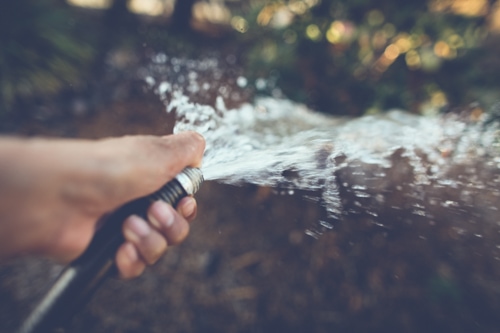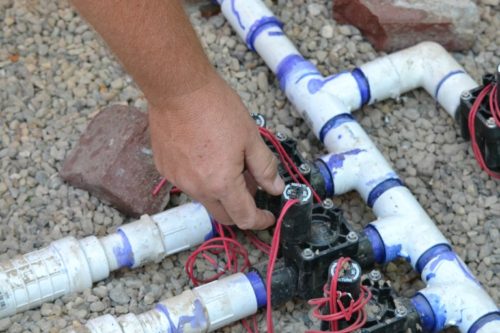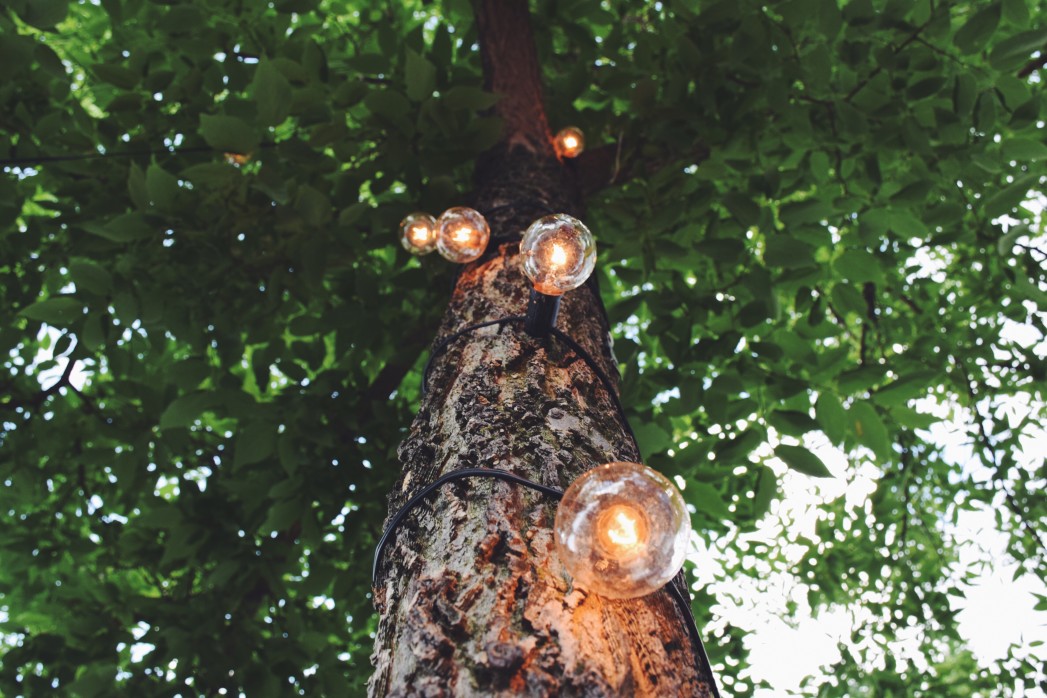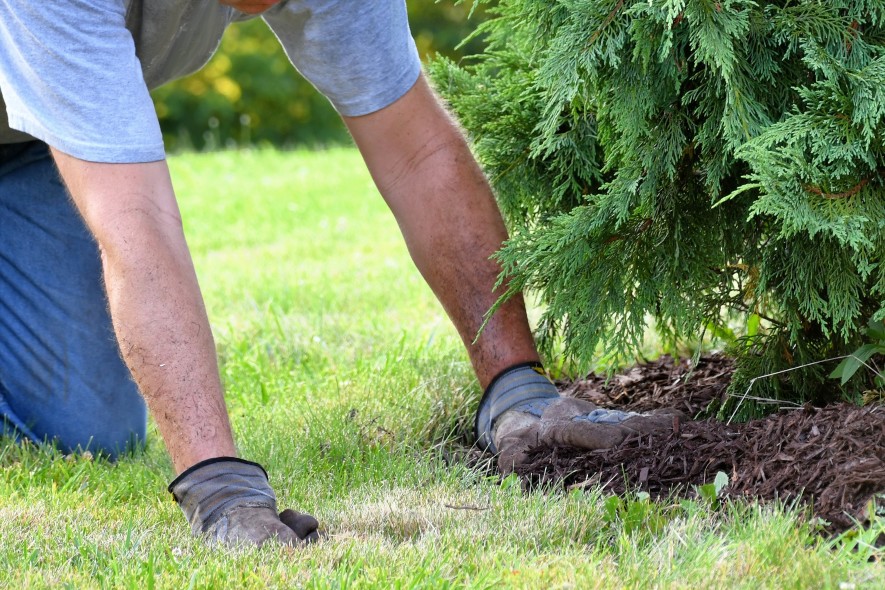

When it comes to watering your tree properly, it can be a bit tricky — as trees can suffer if you water too little or even if you water too much. So how can you tell if your tree is suffering from a lack or an excess of water? Unfortunately, signs of underwatering and overwatering your trees can be similar when it comes to the canopy and foliage, but do not stress because fortunately, there is a simple way to figure out which issue you have. The ground! Is it constantly damp or is it dry? Plain and simple.
UNDERWATERED TREE SYMPTOMS
- thinning canopy
- browning or yellowing of foliage (off-season fall colors)
- wilted or curling leaves
- untimely leaf drop
- dead branches
- small leaves
- slow growth
- pest infestation
Drought or underwatered trees are fairly easy to detect. For one, they don’t look healthy. The most obvious feature is that their canopy will be sparse, and their leaves will look an untimely fall color with wilting or curling. Then if you notice pests, it is definitely time to change your watering protocol and give your tree a nutrient boost through our Tree Health Care system.
When the tree’s drip zone (ground underneath the canopy) is devoid of water, the fine roots, which play an important role in water and nutrient absorption, begin to die back, thus affecting the health of the tree and displaying itself in the canopy and foliage. Eventually, if the tree continues to suffer from underwater stress, then the large, anchoring roots will dry up and die off as well. That’s when large trees become dangerous, as they become a likely candidate for tree failure.
OVERWATERED TREE SYMPTOMS
- frequent wet ground around the tree
- brittle leaves
- brown edges
- gray or black spotting on the leaves
- wilted or curling leaves
- yellowing or light green foliage
- untimely leaf drop
When a tree is receiving an excessive amount of water, the tree suffocates. Trees aide the planet with their ability to absorb carbon dioxide from the air and release fresh oxygen. But surprise, surprise — trees need oxygen too! The fine roots are also responsible for absorbing oxygen from tiny air pockets in the soil. If the tree is receiving too much water, water fills the air pockets, making it hard for the tree to breathe. The roots then produce methane, hydrogen, and nitrogen gases that choke out the roots, preventing them from performing their important duties for the tree.
HOW TO PROPERLY WATER YOUR TREE
HOW MUCH WATER FOR YOUR TREE
There’s a general rule of thumb for the amount of water to provide for your trees that may come as a shocker for most people — 10 gallons of water for every inch of trunk diameter! So if you do the math, a young tree with a skinny 2-inch trunk diameter that you just purchased from the nursery in a 5-gallon container needs 20 gallons of water according to that theory! Overkill? Possibly — although some arborists may argue otherwise. However, from our experience in the industry, as well as caring for our own personal trees, a newly-planted young tree does not need that hefty amount of water. So our verdict is…save your water!
As mentioned prior, you can learn how much water your tree needs by a simple screwdriver test. A majority of a tree’s roots sit in the top 12 inches of the ground, especially in urban settings where soil compaction and development can hinder deep root growth. When watering your tree, deep watering is the goal. And slow watering is the most efficient way to reach that goal. So provide enough water for your tree until your screwdriver, if you’re doing a screwdriver test, can easily be pushed all the way down. Then water a bit more, and then your tree will be a happy tree.
RECOMMENDED METHODS TO WATER YOUR TREE
Hose. Since trees require so much water, standing there with your hose will be extremely time-consuming. In addition, watering with the hose on high pressure will shower the tree with more water than the soil can absorb, which will result in wasted water run-off. A more efficient method in using a hose is to turn it on as low as possible so water is slowly dribbling out. After 20-30 minutes, move it to a new location under the canopy. Keep repeating until the tree’s drip zone has been sufficiently watered. Depending on the size of the tree, this may take 1-2 hours — so make sure to set your timer.
Soaker Hose. An easier and efficient method is using a soaker hose that is placed under the tree’s canopy. Soaker hoses are porous and allow water to slowly seep out. This gradual release of water minimizes wasted water and maximizes water absorption. The soaker hose should be placed in a circular pattern under the canopy of the tree and turned on for an hour or more. The goal is for the water to penetrate eight inches into the ground, which can easily be determined using the screwdriver test. Push an 8-inch screwdriver into the ground. If it pushes easily all the way, the ground is moist. Easy does it!
Dripline. The easiest method to watering your tree is using a drip irrigation system. However, it is also one of the most difficult to install. But once installation is complete, the rest is a no-brainer. Just like with a soaker hose, the dripline should be set in a circle under the canopy and run for an hour or more, contingent on factors such as the tree’s size, species, and climate.
Sprinkler. Sprinklers are another common system for watering landscape. Like the drip system, installation can be time-consuming and difficult, but once completed, the work is automatically performed for you and can be adjusted according to the tree and the season. Sprinklers are great for watering lawns and any area of land that is mostly covered with landscaping, however when they are used to water trees that are not heavily surrounded by other plants, then weeds will become an issue.
Bucket. If you need an easy method to water your tree that doesn’t require much time and doesn’t require the purchase of any additional “fancy” tools, you can always use the good ol’ 5-gallon bucket that is hanging out in your garage. Drill holes on the bottom portion of the bucket and place it in the tree’s drip zone. Fill the bucket with water and let it empty out. Then move the bucket to a new location, and repeat the previous step until the tree has received a sufficient amount of water.


HOW OFTEN DOES YOUR TREE NEED TO BE WATERED?
Newly planted trees will require more water during the first 1-2 years. Their root structure is limited to a smaller area, and it needs to expand in order for the tree to thrive. However, when a tree is freshly transplanted, it undergoes a period of shock — which is why you may see leaf drop or signs of deterioration. Have no fear though. With proper care and patience, your tree will bounce back.
During the first two weeks after being planted, new trees need to be watered at least three times a week over the root ball, or even daily in dry, hot weather. Then, for the next ten weeks, this can be reduced to 1-3 times a week. For the rest of that first year up until the fifth year, the tree will need to be watered twice a month, or even weekly during times of heat or drought. For the first two years, water needs to be concentrated over the root ball. After that, the watering zone can be expanded to accommodate the growing root system.
YEAR ONE
Weeks 1+2
Weeks 3 -12
Rest of 1st Year
Water 3-7 times a week over the root ball.
Water 1-3 times a week depending on the weather over the root ball.
Water 2 times a month over the root ball.
YEAR TWO
Hotter Months
Colder Months
Water weekly or bi-weekly over the root ball.
Provide supplemental water when necessary.
YEAR THREE
Hotter Months
Colder Months
Water weekly or bi-weely to an area twice the width of the root ball.
Provide supplemental water when necessary.
Once a tree is established and mature, they will have such extensive roots that they are able to tap into deeper groundwater or may even creep into your neighbor’s property to take advantage of their water system. However, if it has not rained in at least a month, then supplemental water will still need to be provided. Remember that a water-deprived tree is weaker and susceptible to pests and disease, so keeping it as healthy as possible is key to its longevity.


OTHER MEASURES TO HELP YOUR TREE
MULCH
Adding mulch as groundcover for your trees has many benefits that should not be overlooked. For starters, adding mulch helps prevent soil compaction by buffering the impact of water that can result from watering with a hose or from hard rain. Remember, trees get oxygen from tiny air pockets in the soil, so its important to keep the soil from getting too compacted. Mulch also acts like a layer of protection by helping to stabilize the ground temperature during extreme weather. During the hotter summer months, the ground will be slightly cooler, which results in less water evaporation and more comfortable roots. Happy roots, happy tree.
When applying mulch, it is important not to be too excessive. Trees only need 2-3 inches of mulch. Anything more will be asking for an array of problems, such as suffocation of the tree’s roots, wasted water, and a higher susceptibility to rodent pests and diseases. Therefore, avoid creating a mulch volcano. As the name implies, do not place down so much mulch that it ends up looking like a volcano around your tree.
CAMBISTAT
Cambistat is a plant health care additive developed by Rainbow Treecare Scientific Advancements that is quickly growing in popularity in the landscape and arboricultural industries. Cambistat was created primarily as a growth regulator, but it has several side results that are so beneficial for trees that people across the nation are raving about this product. Since the tree shifts its focus from above-ground growth, its energy is applied more towards underground growth with the roots, more specifically fine roots, which are primarily responsible for water, nutrient, and oxygen absorption. The end result is an overall healthier tree with greener foliage, increased resistance to disease, and increased resistance to heat and drought.
Even though Cambistat is a growth regulator, any size tree, big or small, would benefit from it. Many people use Cambistat to help control the size of their mature trees, but why would anyone use it on a young tree? Aren’t people anxious for a teeny, weeny, baby tree to grow to a large, lush adult tree? Yes, but remember that new transplants don’t grow much anyways the first two years after being planted so they could focus on root growth. Therefore, adding Cambistat during this period would be great timing so it could expedite the root growth process.
The effects of Cambistat can last for up to three years. After that time, you can choose to have it reapplied or skip reapplications so that a young tree can now refocus on trunk and limb growth. Either way, the tree will now have a stronger root system that is well set up for water absorption.

LOOKING FOR A TREE SERVICE COMPANY?
CONTACT LC TREE SERVICE TODAY FOR YOUR FREE ESTIMATE.

The post HOW TO WATER YOUR TREES PROPERLY first appeared on San Diego Tree Trimmers – LC Tree Service.